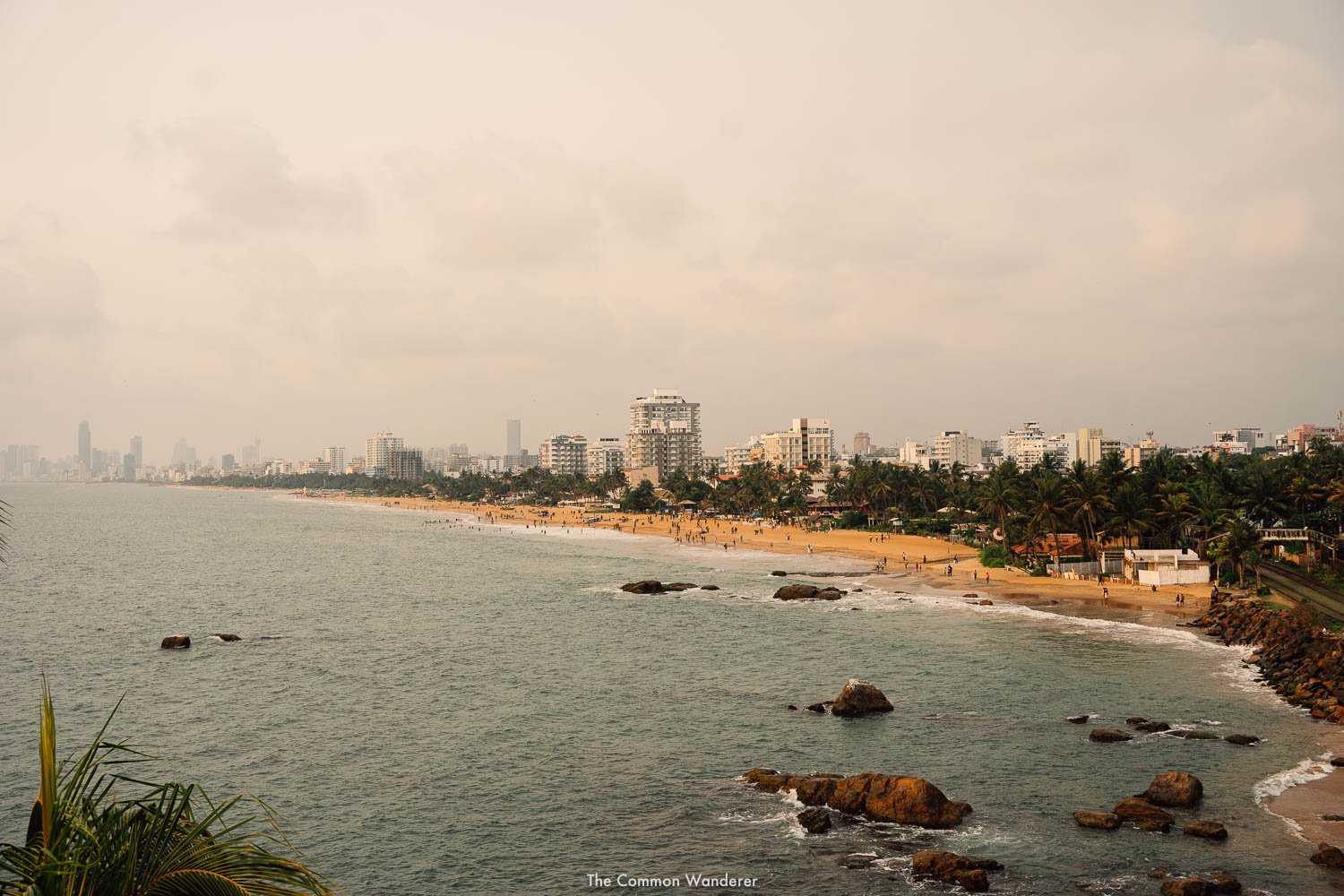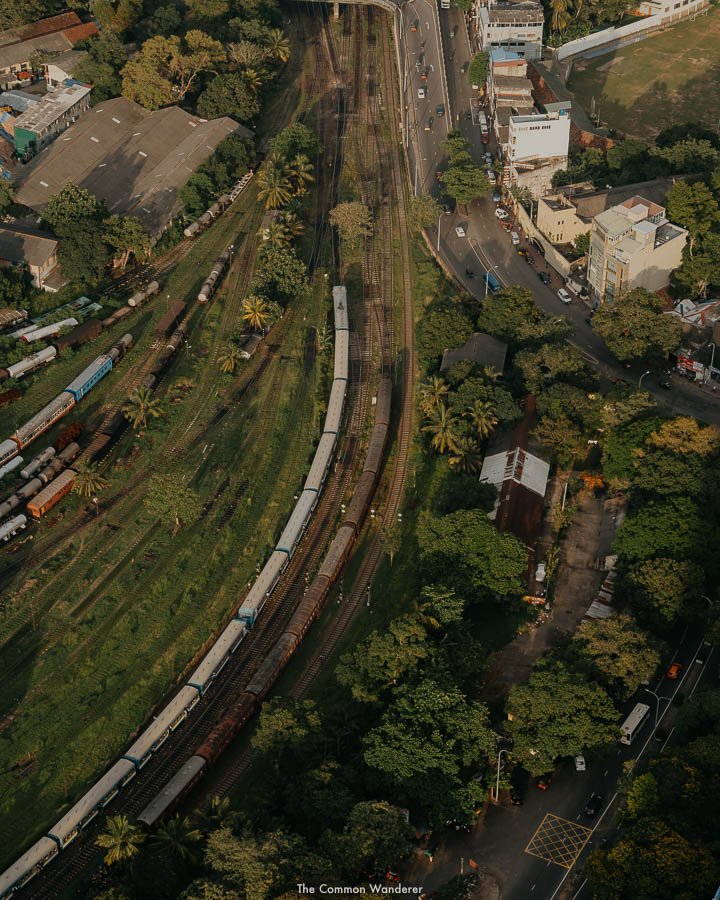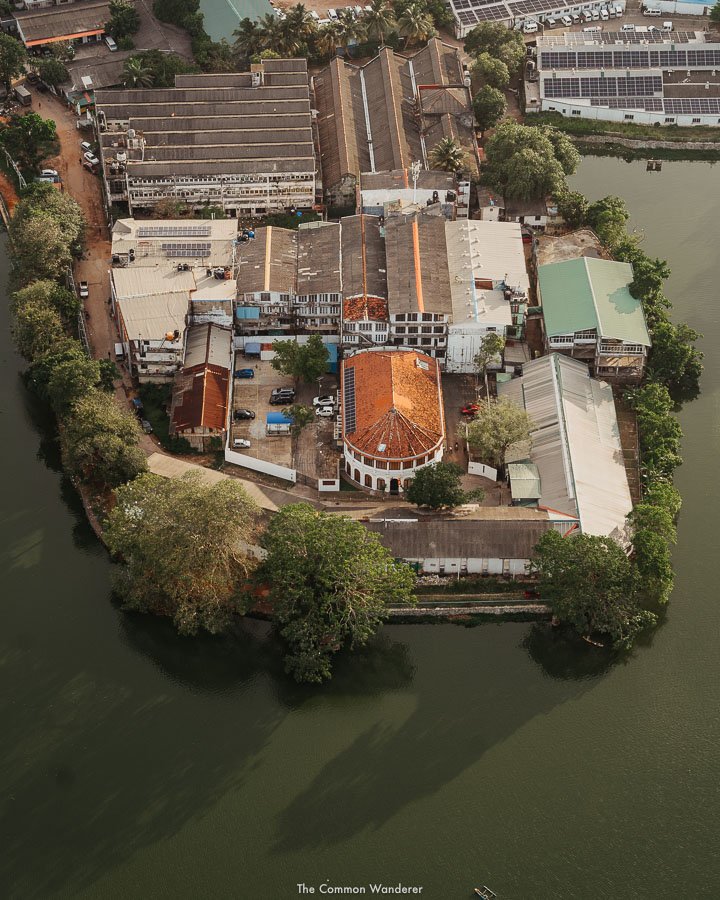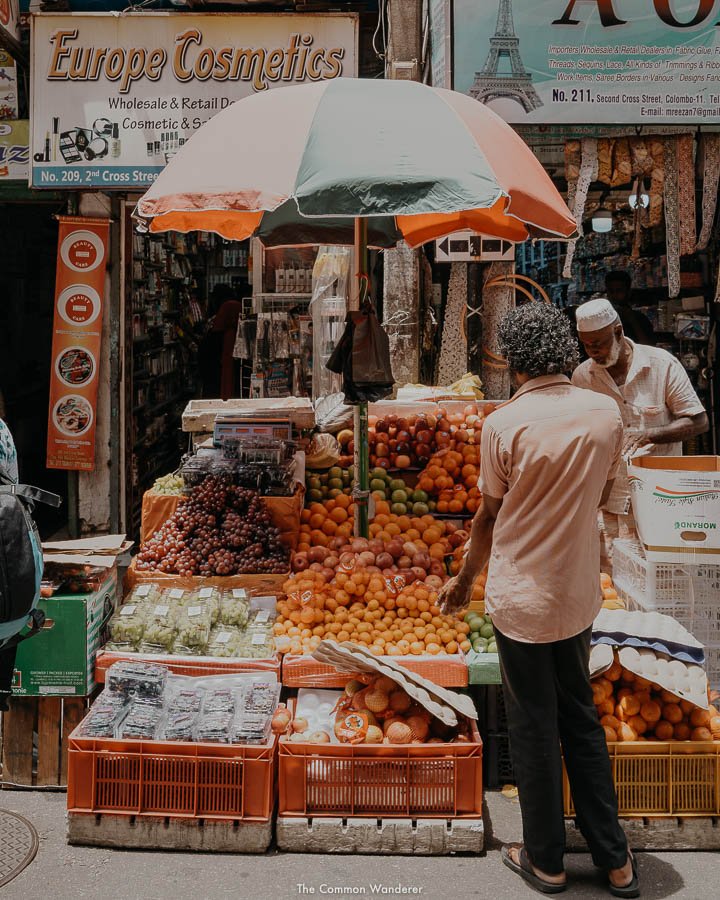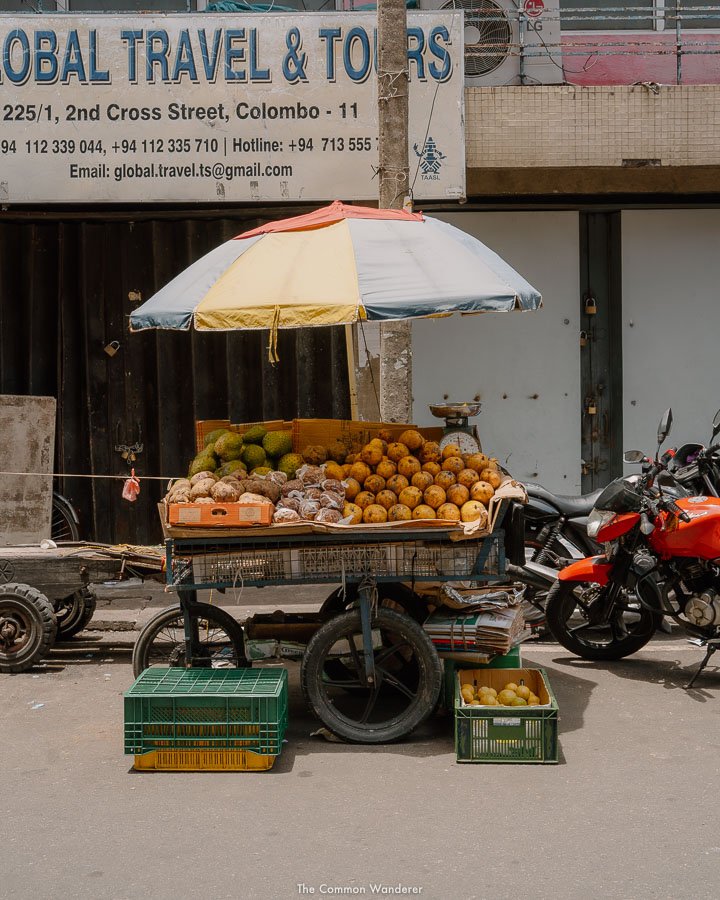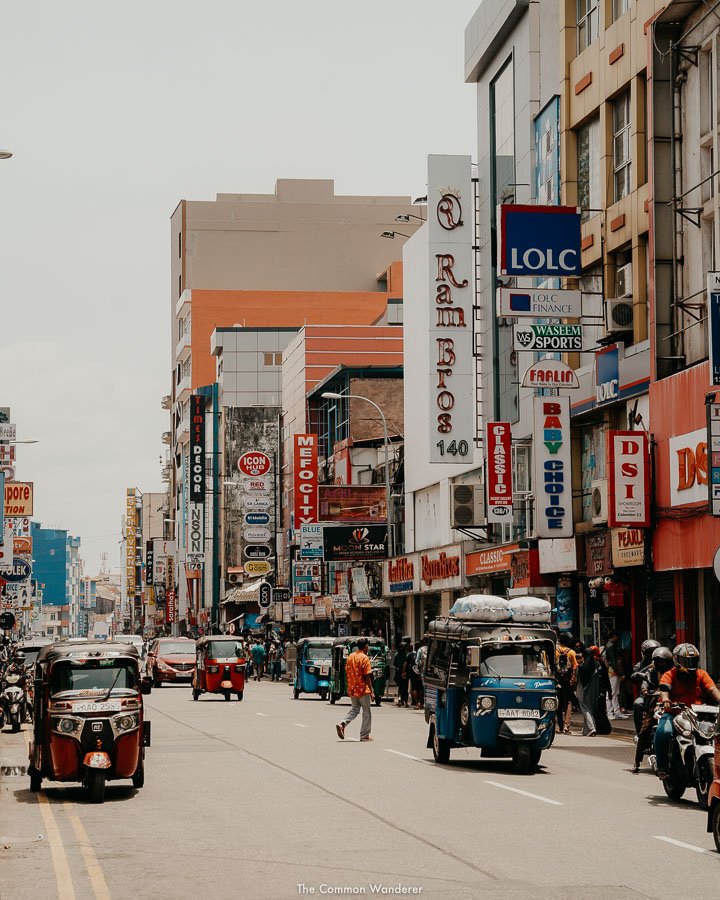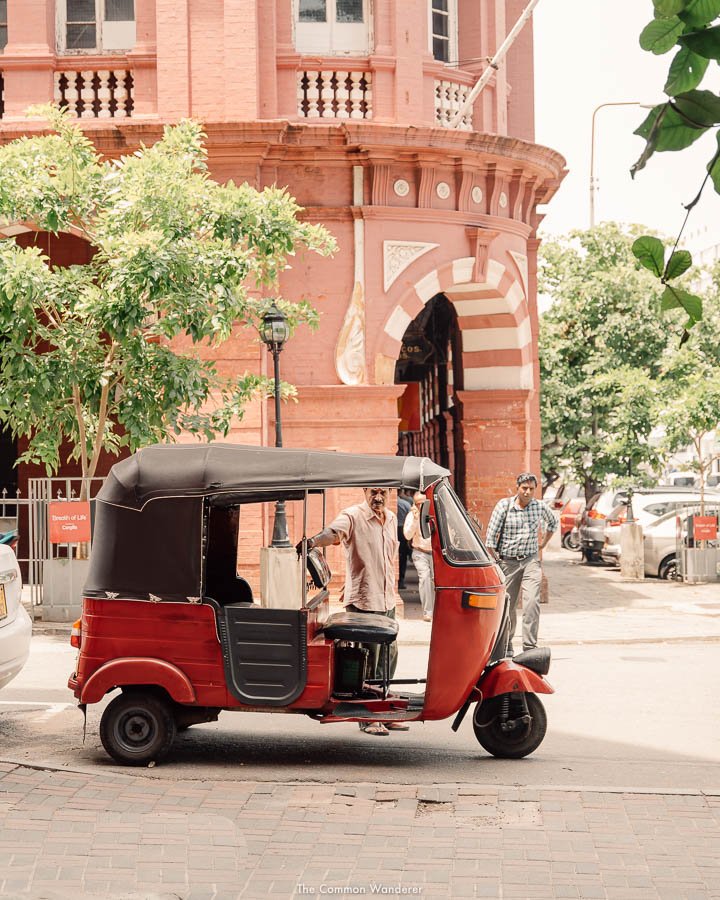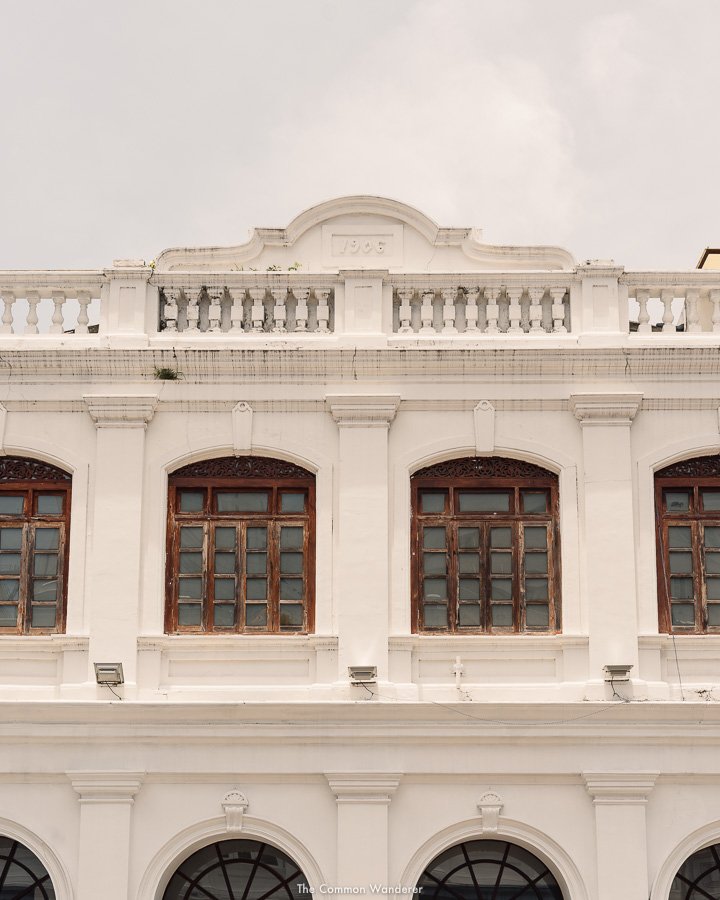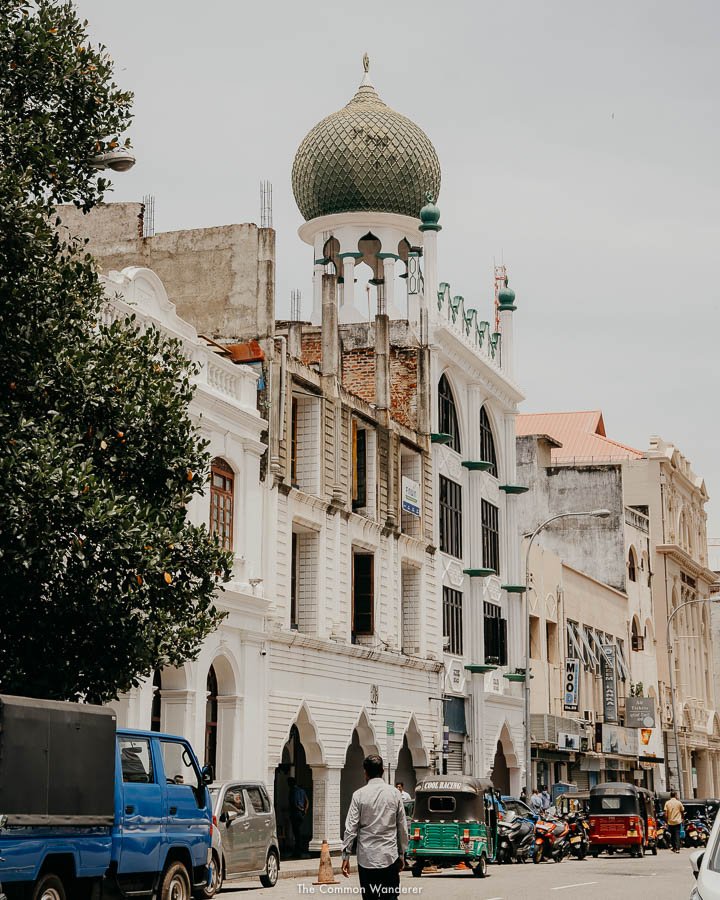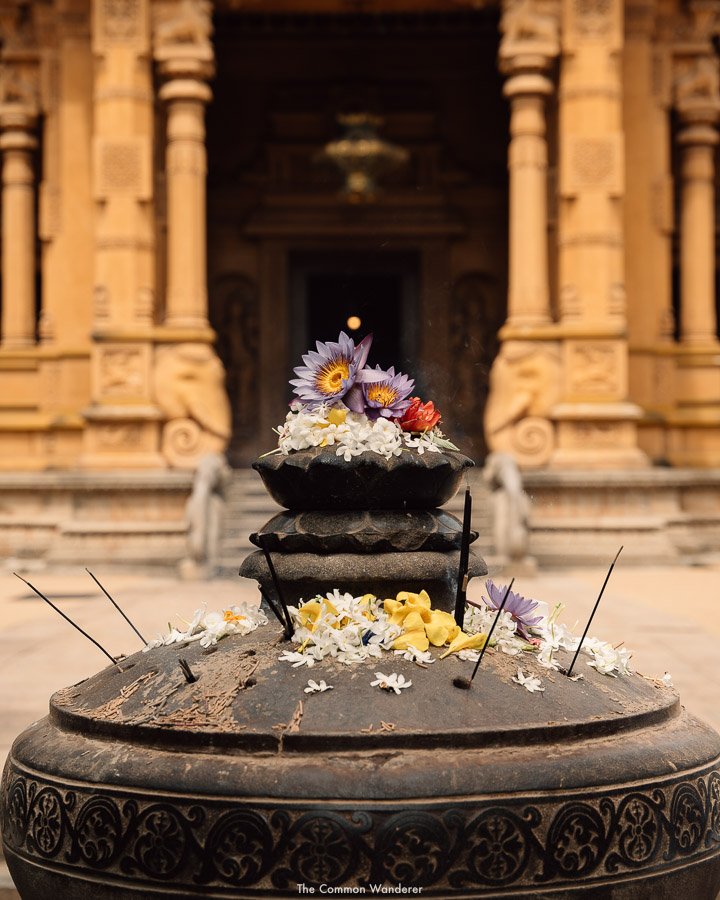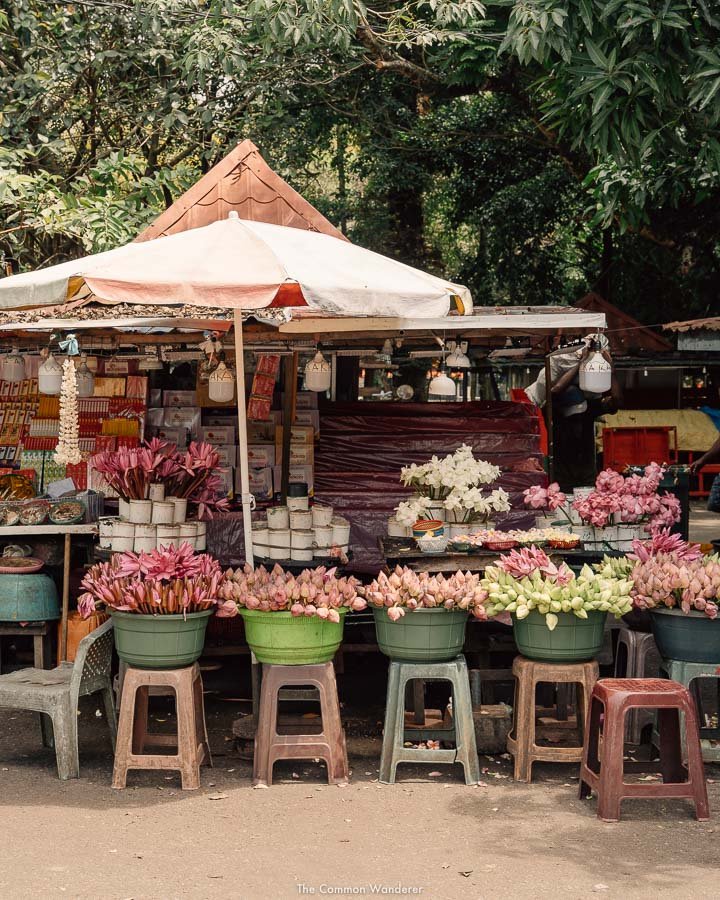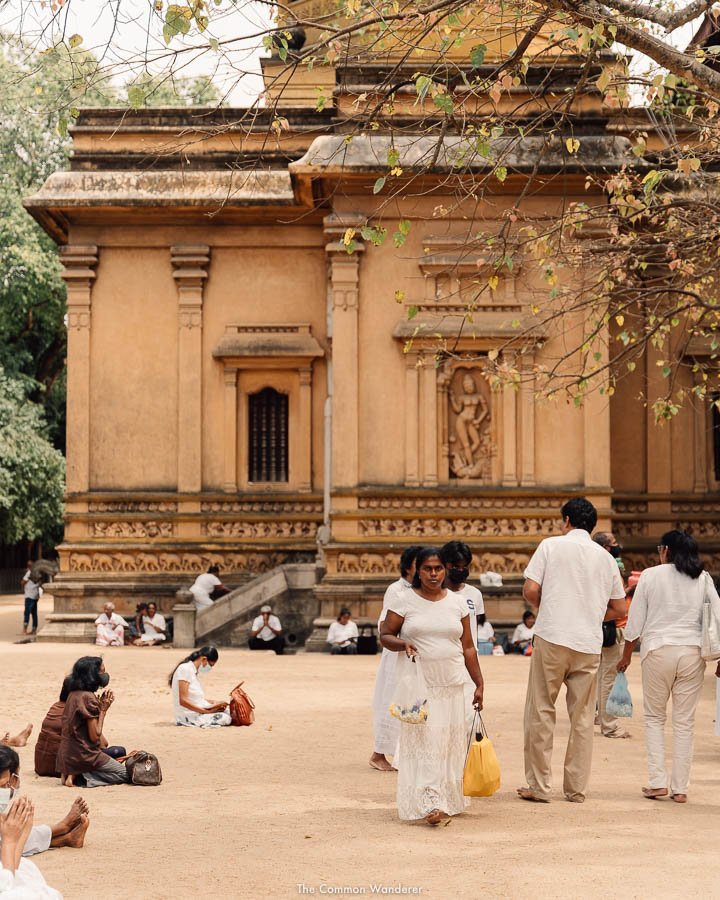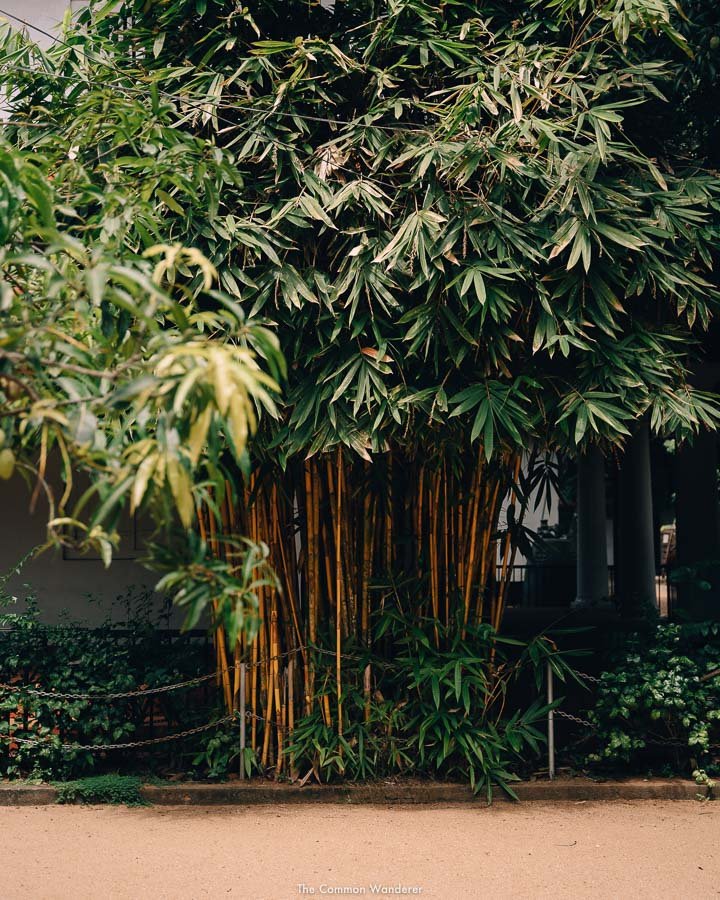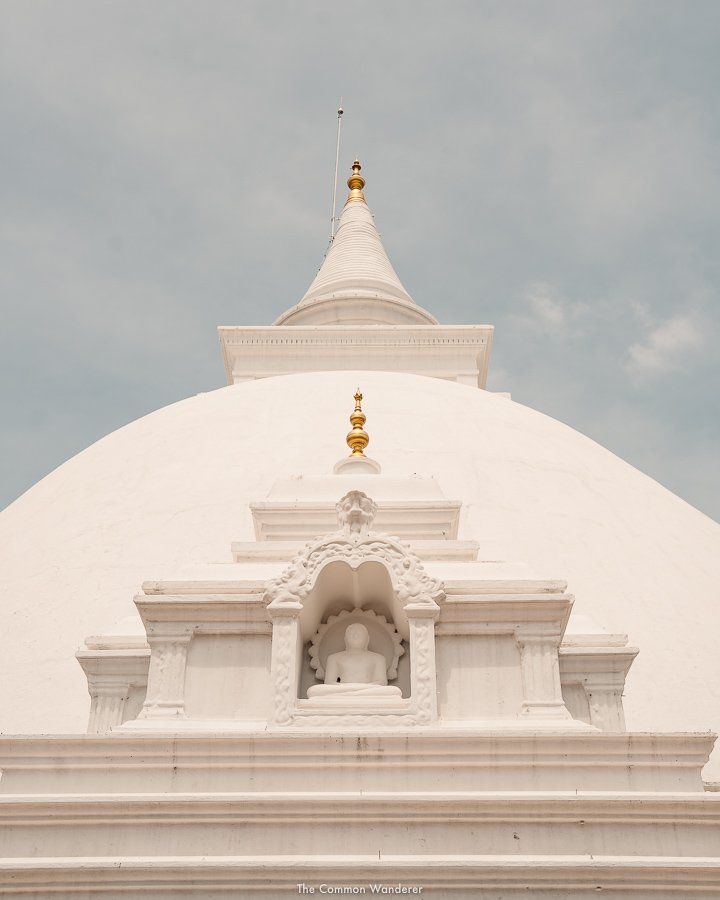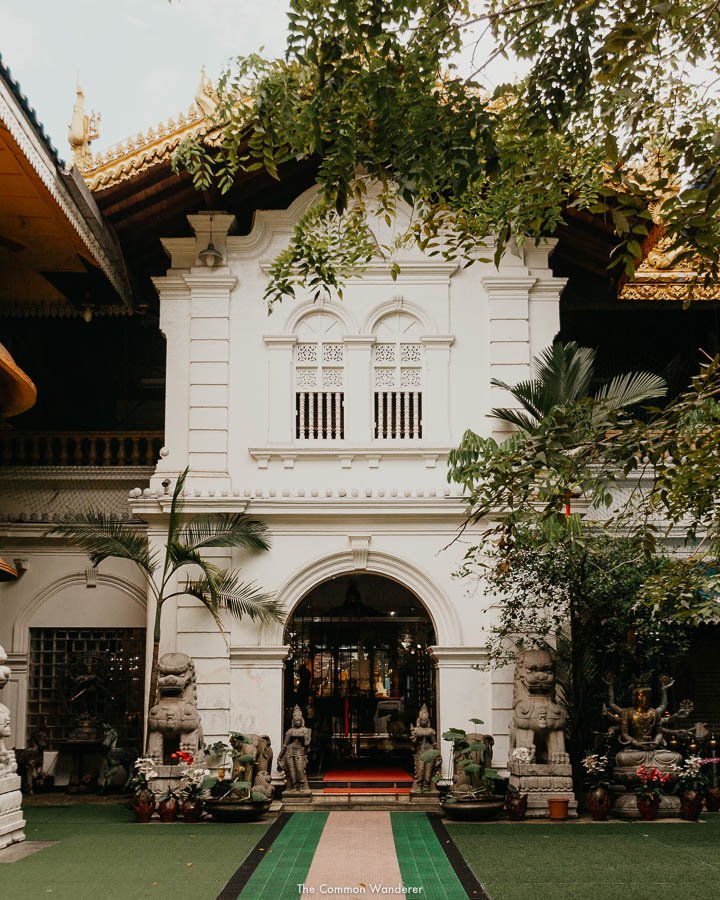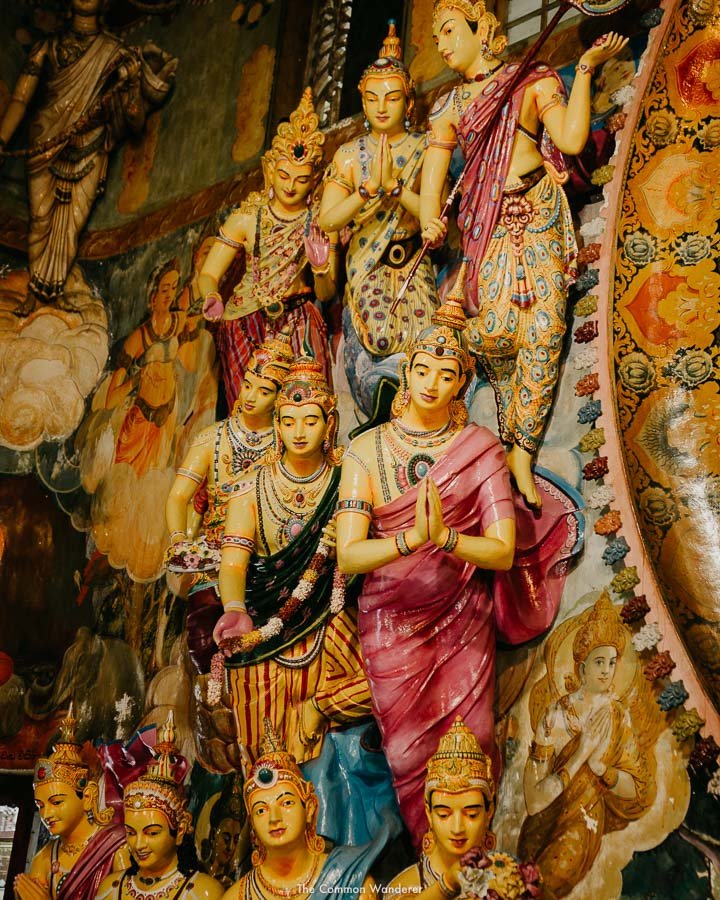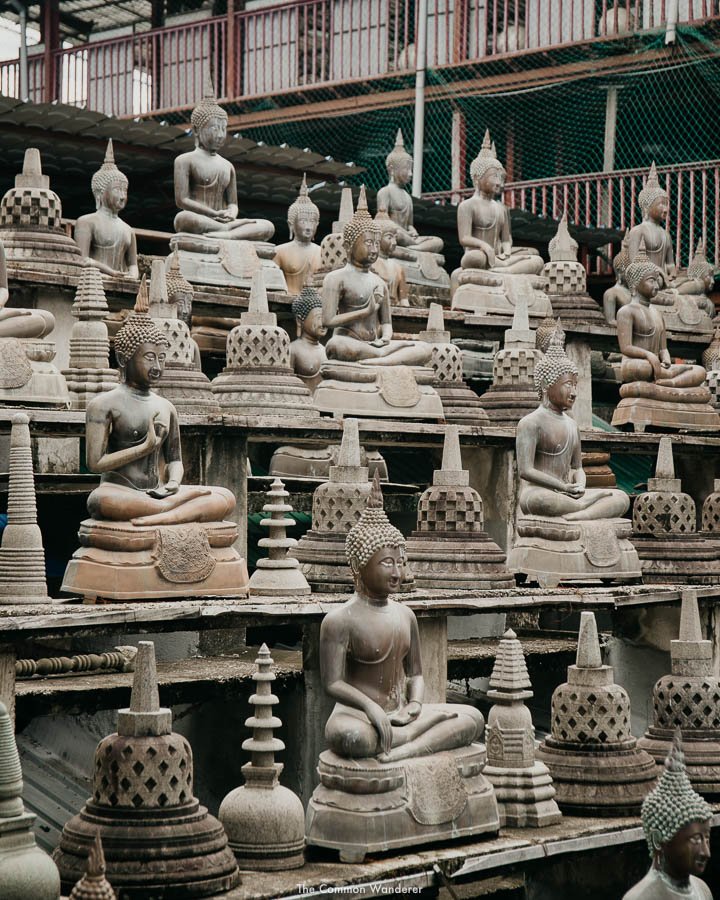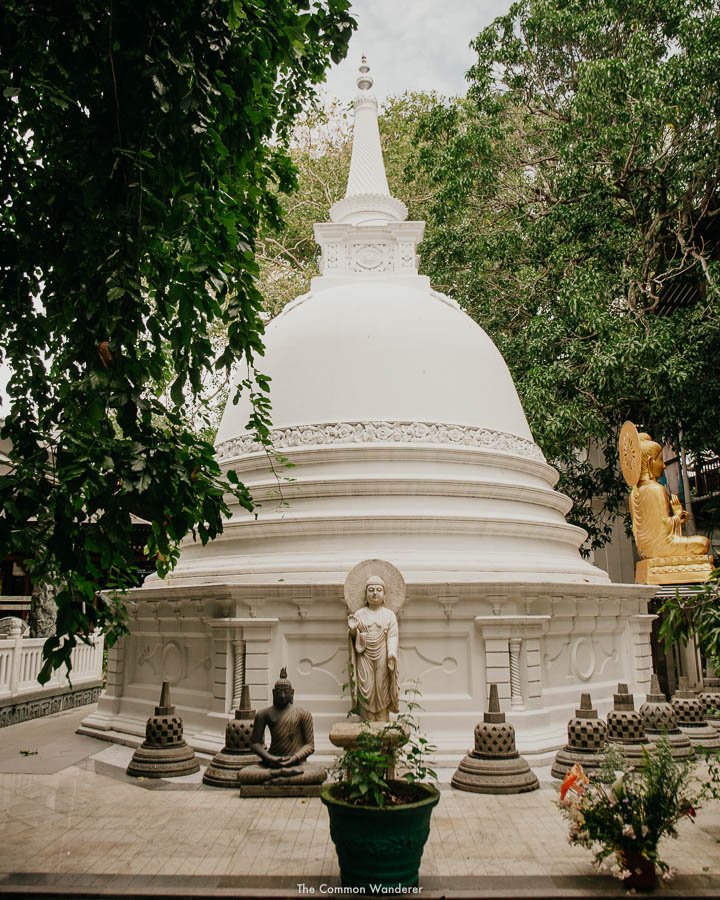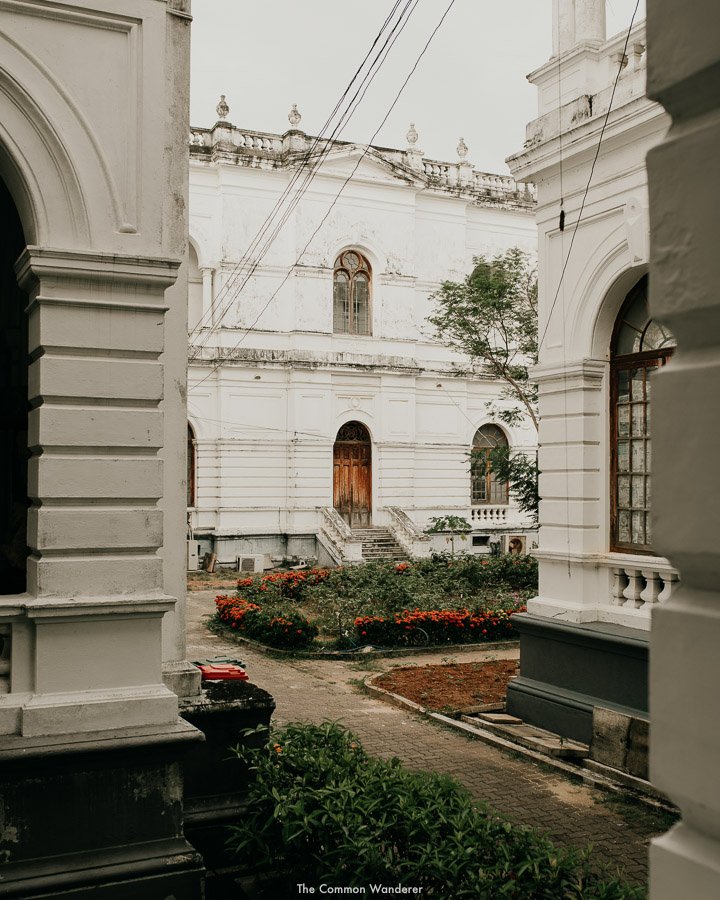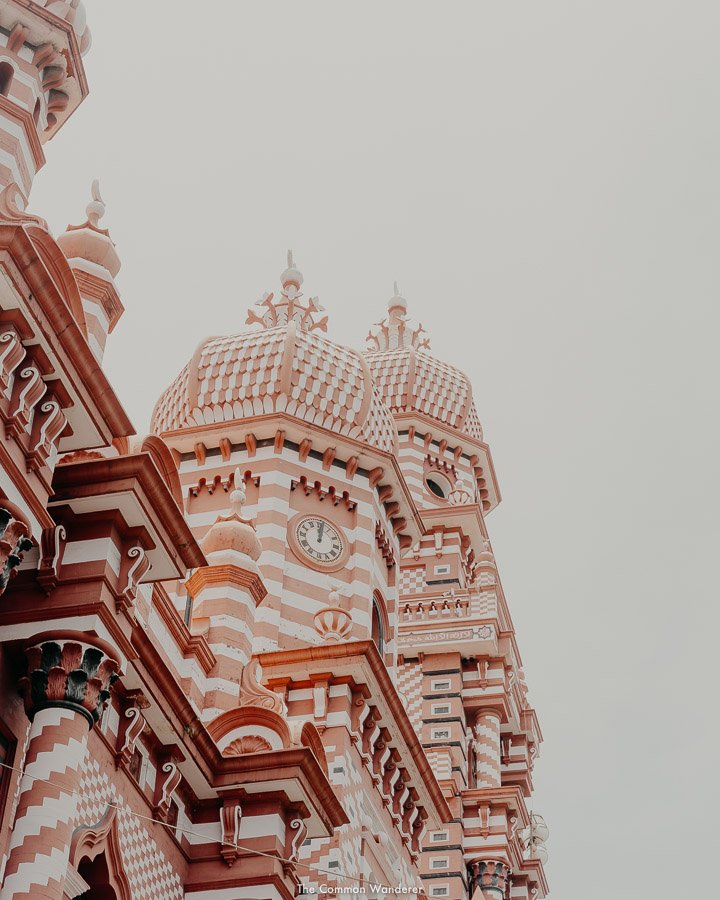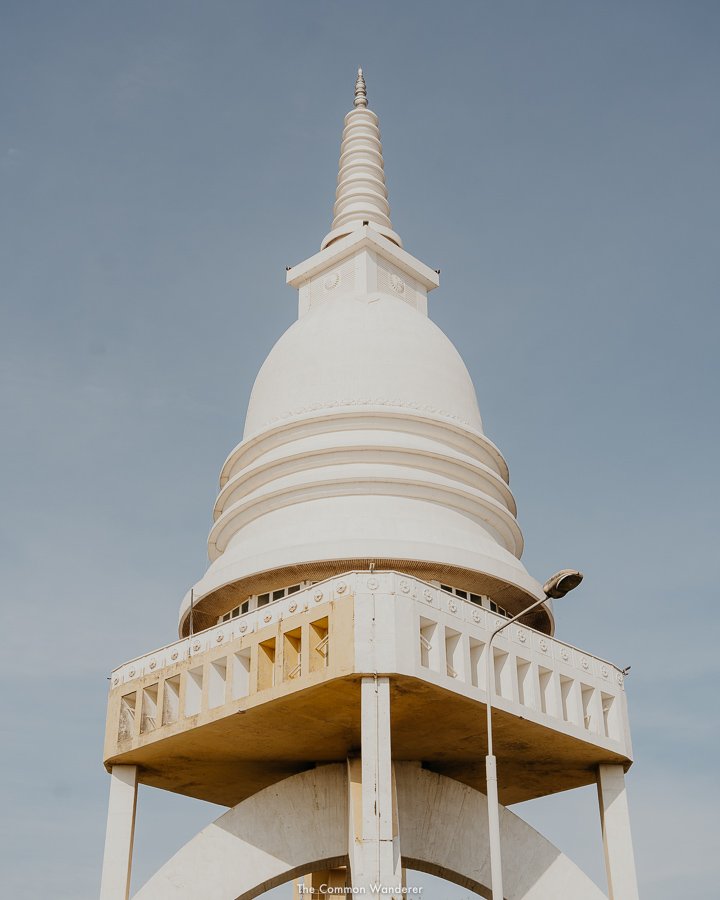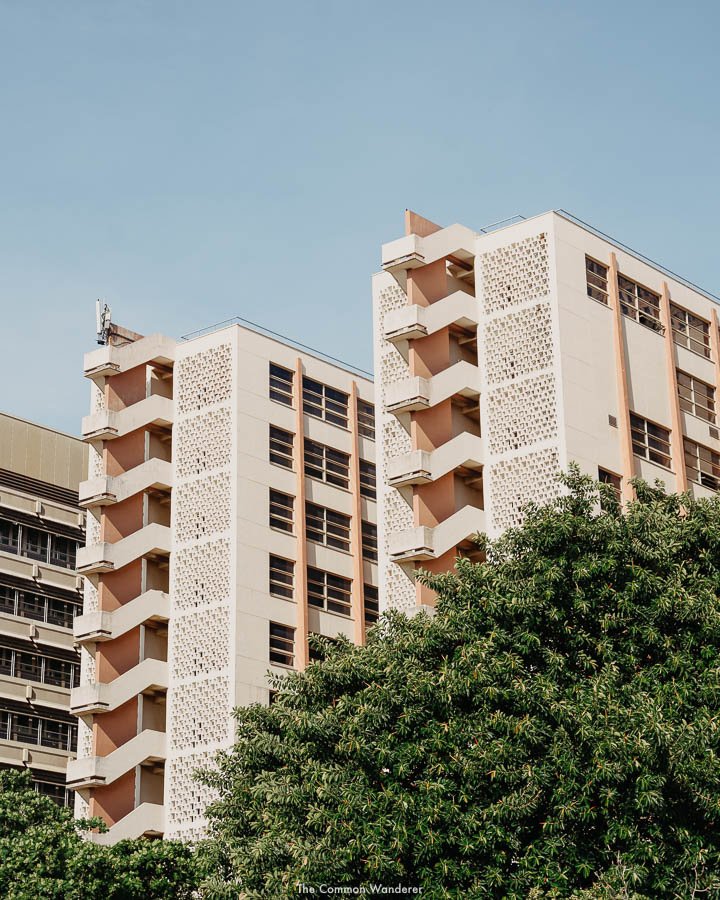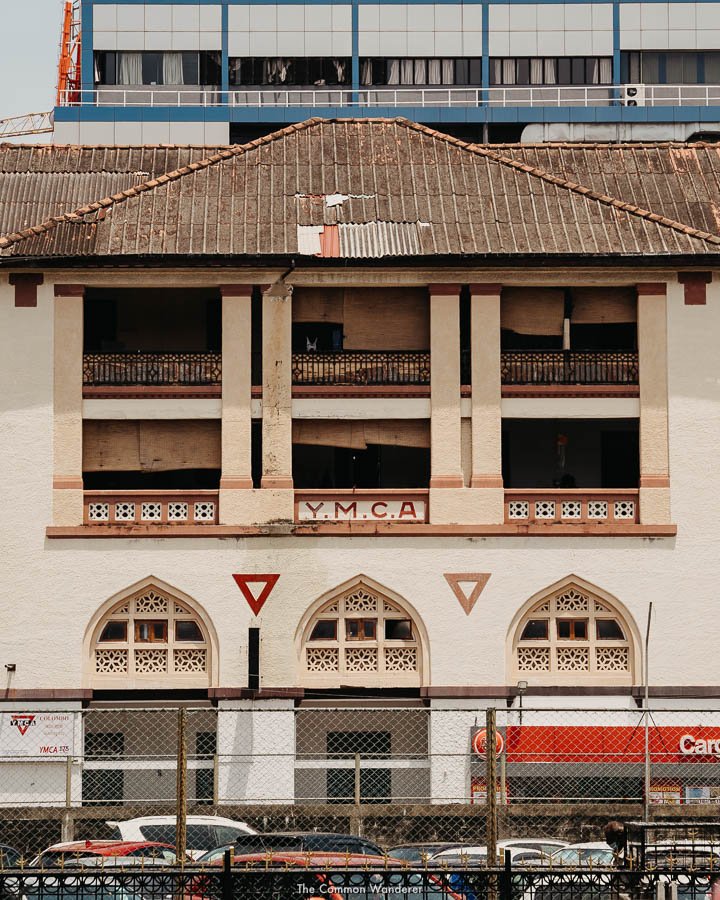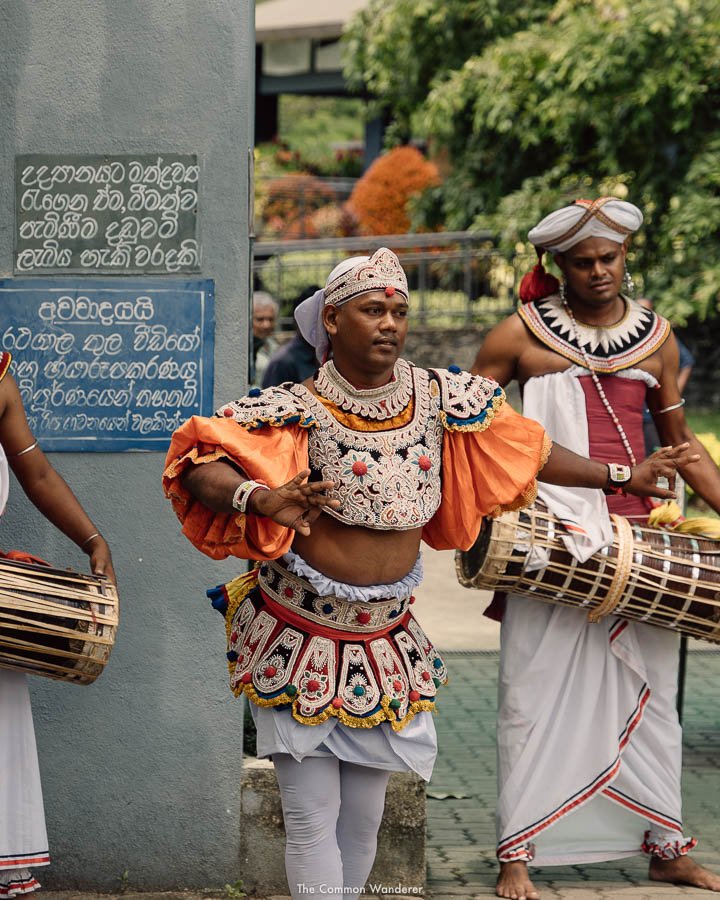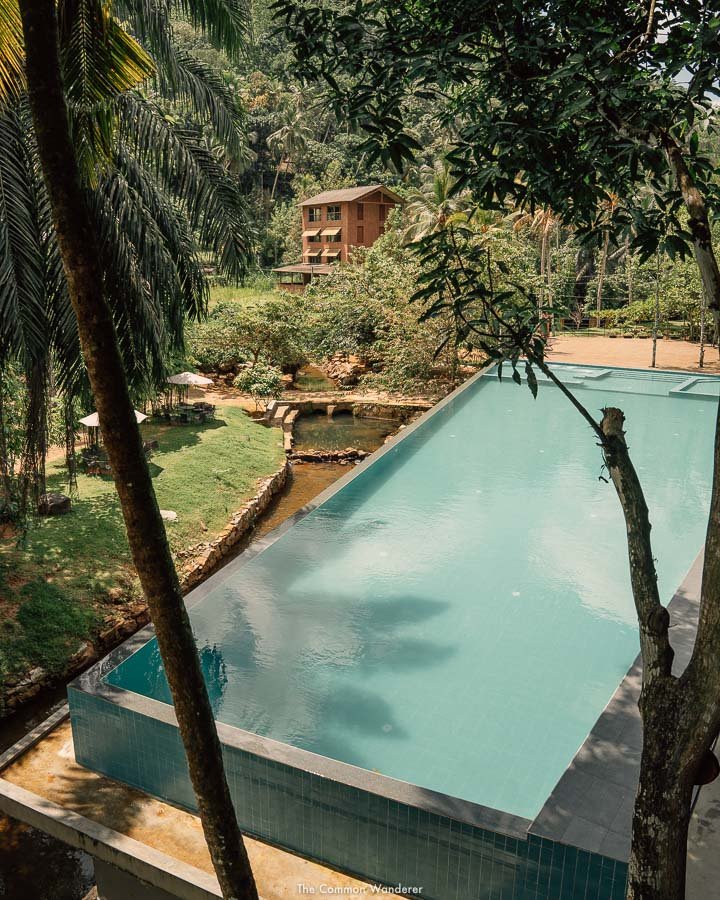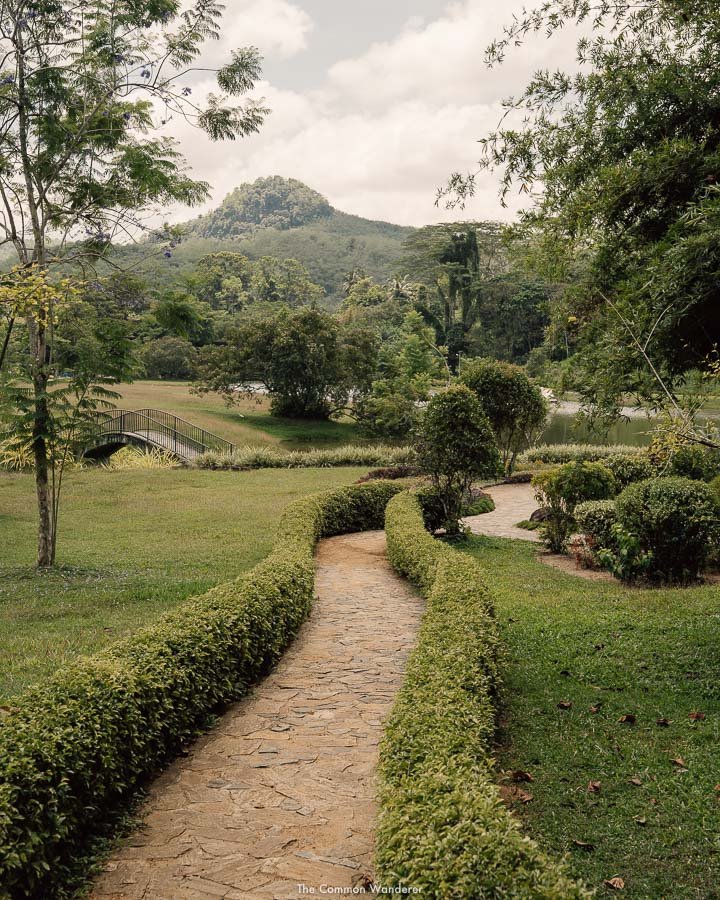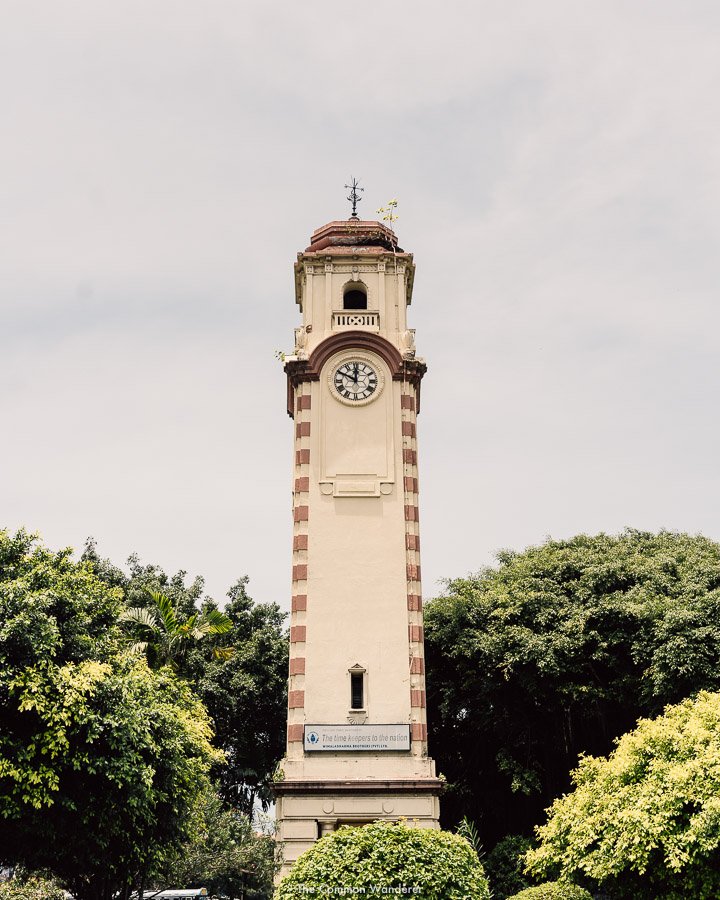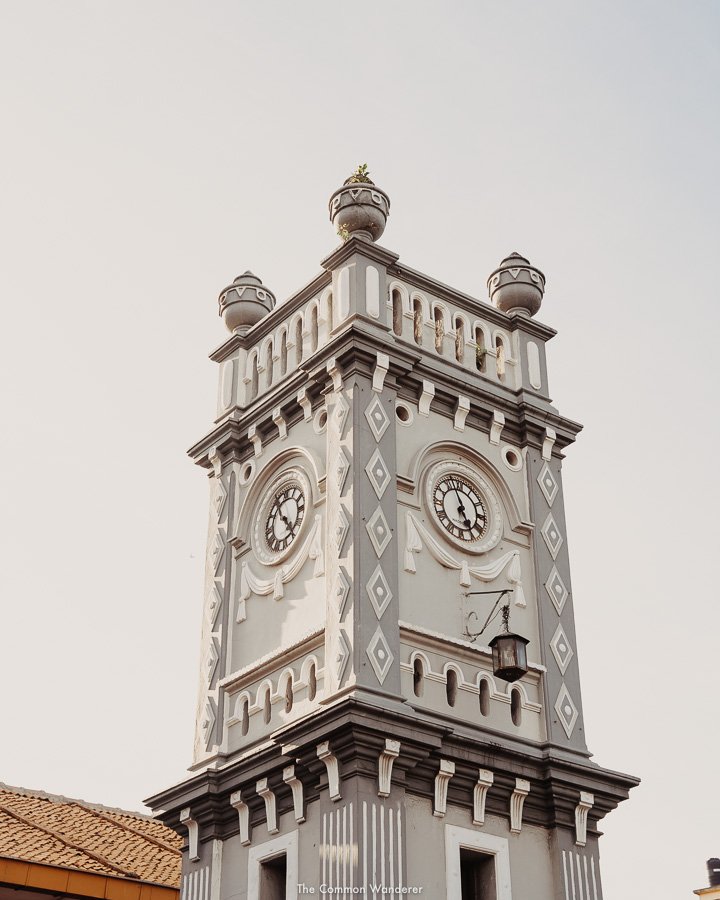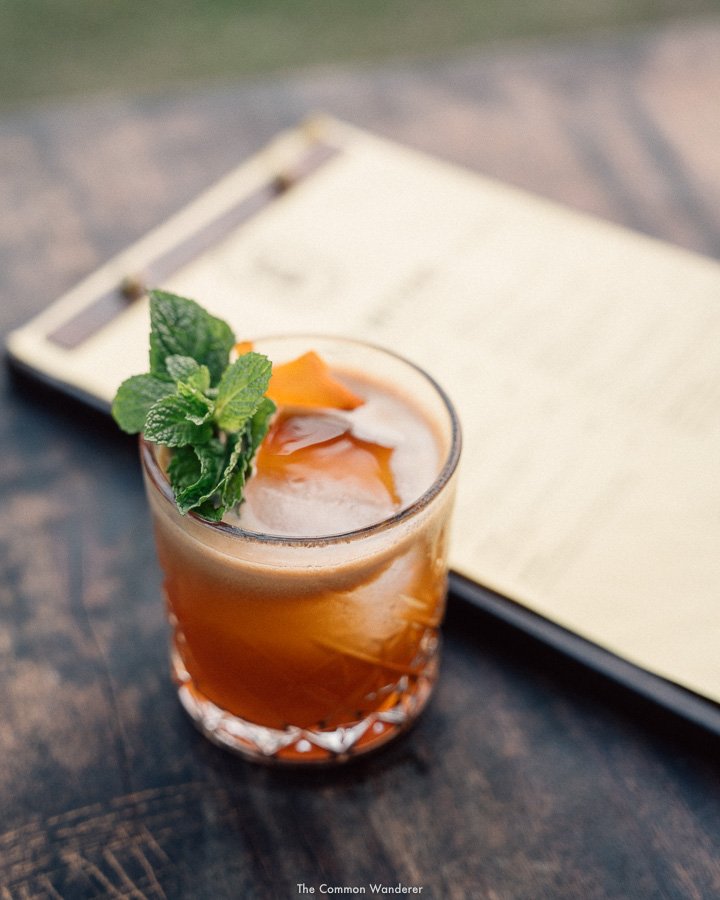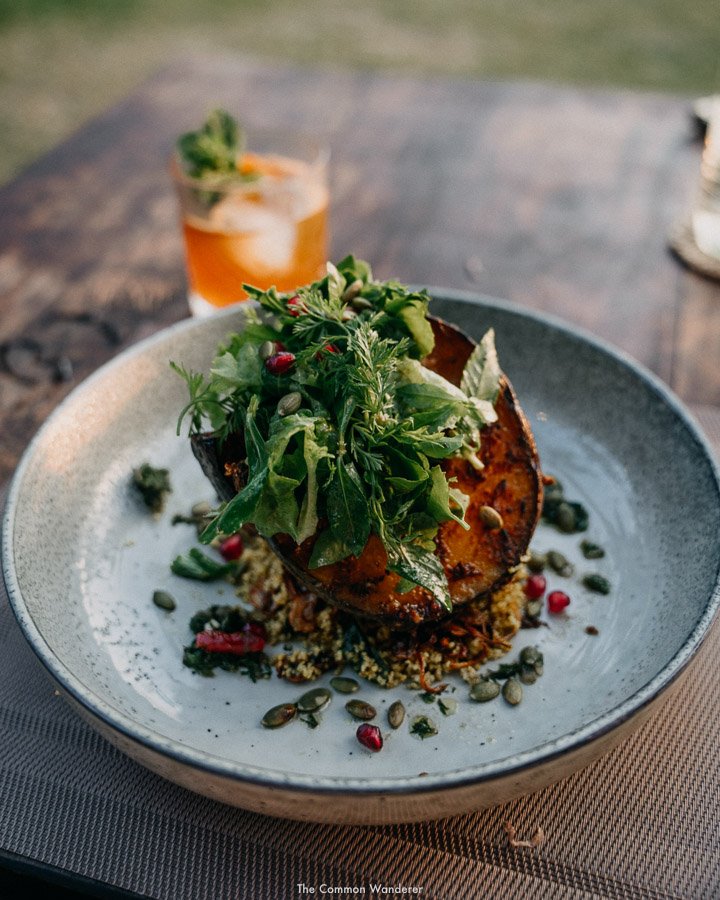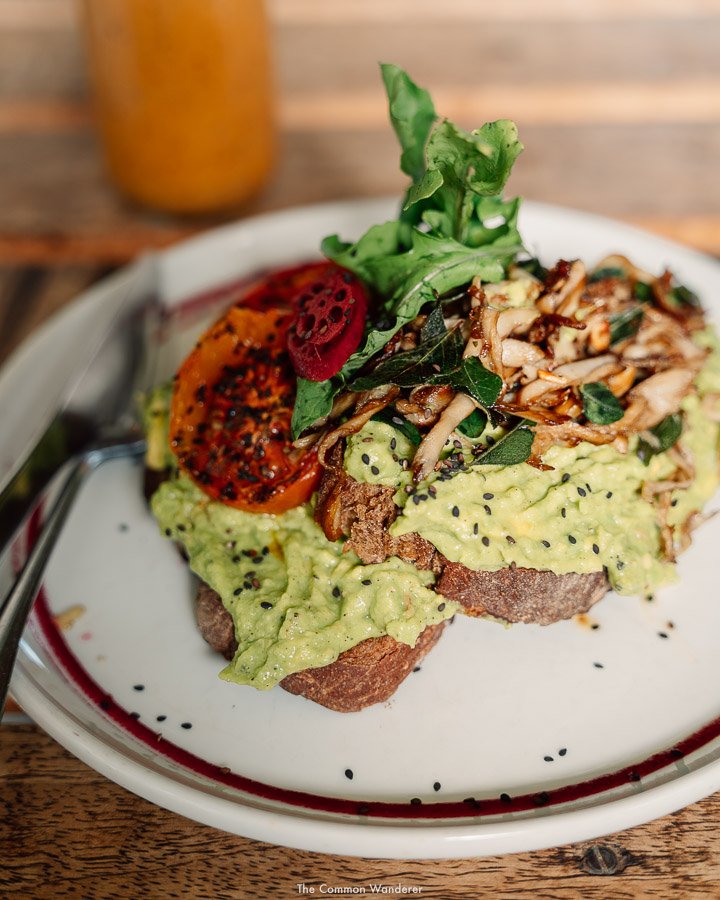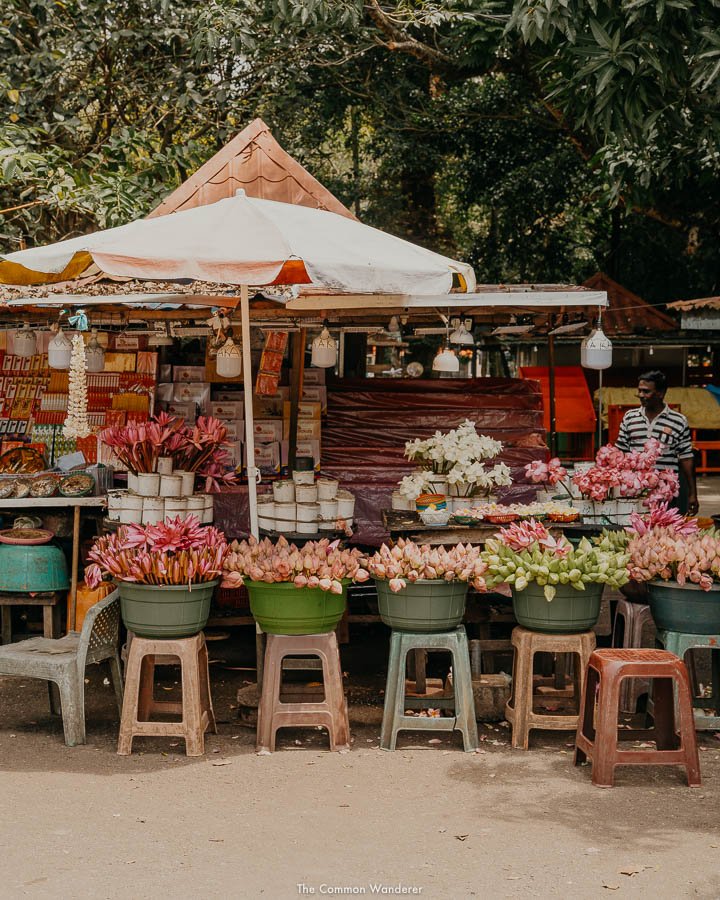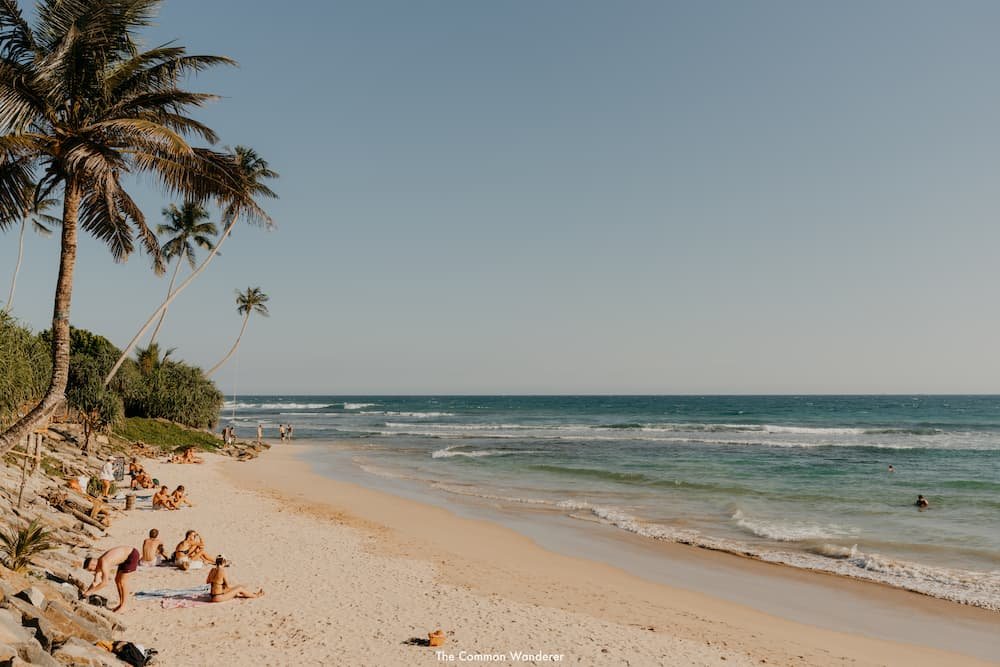10+ Incredible Things to do in Colombo, Sri Lanka's Bustling Capital
Discover the best things to do in Colombo, Sri Lanka with our comprehensive guide. From the historic Fort area to the bustling markets of Pettah, and the city’s stunning temples, our guide covers the top attractions and hidden gems of this vibrant city.
Colombo is hard to love. A large, sprawling port city that’s lacking in attractions, charm, or beauty, it’s quite easy to arrive in Sri Lanka and head straight to Galle Fort, the cultural hinterland, or the emerald southern coast.
Yet, while Colombo may be hard to love, spend enough time here and you’ll discover it’s actually an enjoyable city with plenty of atmosphere and character.
The city is a heady mix of architectural and cultural influences, with historic temples, bustling bazaars, heritage relics and sprawling parks making up the majority of the must-visit attractions.
In the historic Fort area, luxury high-rise hotels rub shoulders with gritty backstreets and traditional markets, reflecting the city's contrasts. The colonial history of the city is evident in its architecture, with grand old buildings sitting side-by-side with modern skyscrapers.
The city's cultural melting pot is reflected in its excellent cuisine, with a diverse range of street food vendors, upscale restaurants serving everything from spicy curries to fresh seafood, and the ubiquitous street food, kottu.
In this guide, we share the best things to do in Colombo, including hidden secrets we’ve found during our five visits to the city. We also share where to stay and eat, and essential travel information to help you get the best out of the city.
This is our guide to Colombo, a city hard to love, but loveable nonetheless.
LOVE OUR PHOTOS? Edit like us with our Tropical Dreams Preset Packs, and Tropical Bliss mobile video filters, inspired by the tropical beauty and colour of this beautiful country
COLOMBO SNAPSHOT
WHERE TO STAY | Cinnamon Grand Hotel, Galle Face Hotel, Vibe Hostel
WHAT TO DO | Lotus Tower, Pettah Markets, Galle Face Green, Kelaniya Raja Maha Viharaya Temple, Gangaramaya Temple, sundowners at Mt. Lavinia Hotel, Jami Ul-Alfar Masjid
WHERE TO EAT | Ministry of Crab, Barefoot Ceylon, Monsoon Colombo, Curry Pot
HOW TO GET AROUND | By tuk tuk, or on foot
WHAT TO SEE AND DO IN COLOMBO
WATCH THE SUNSET FROM THE LOTUS TOWER
Unlike most capital cities in Southeast Asia, Colombo lacks popular tourist attractions. In an effort to rectify this, the Government set about creating a ‘must-see’ attraction, similar to Sydney’s famous Opera House, or Dubai’s Burj Khalifa.
The result is the Lotus Tower, the tallest self-supported structure in South Asia and the tallest skyscraper in the country. The colourful, glistening tower is punctuated by a large, lotus-like viewing deck and restaurant.
At sunset, as the sun slowly and gracefully descends into the Indian Ocean, casting radiant hues upon the cityscape, the Lotus Tower viewing deck provides a coveted front-row seat to nature's captivating evening show. From here, the city reaches as far as the eye can see.
Below, overflowing trains slowly wind their way to Colombo Fort. In the distance, the bustling markets of Pettah resemble a beehive. All along the coast, locals frolic in the warm waters to usher in the evening. In the green outskirts, storms brew and fill the skies with menacing clouds.
It’s a mesmerising place to watch the sunset, and worth the entrance fee alone.
Beyond that though, the Lotus Tower falls a little flat. There are no real other attractions located within the building, and it feels a little dystopian in parts - with the one caveat being the tower had only recently reopened during our visit. There are big plans for the tower, but for now, beyond the views, the tower is underwhelming.
As a result, we recommend visiting just before sunset and letting nature be the star of the show.
THE DETAILS
Where | Lotus Tower, Colombo
Entry Fee | $20 USD for foreigners - to reserve your tickets Email: info@colombolotustower.lk, or purchase on the day
Opening Hours | 9.00 am to 9.00 pm during the week, and 9.00 am to 10.00 pm on weekends
EMBRACE THE BUSTLING MARKETS OF PETTAH
Every time we visit Colombo, we invariably make a beeline for the bustling streets of Pettah to fully immerse ourselves back in the city, and Sri Lanka.
The heart and soul of Colombo, the labyrinthine paths of Pettah's markets are a kaleidoscope of colours, sounds, and scents, and provide a deep cultural experience not found in the developed world of sanitised supermarkets and cookie-cutter markets.
In short, a visit here is an essential thing to do in Colombo.
Tucked in between the port and Colombo Fort station, Pettah has been a hub of trade and commerce since the days of British colonial rule, and home to the city’s large Muslim community. While things have changed since then - for a start, the beautiful colonial architecture of yesteryear is sadly no longer, the markets still showcase Colombo’s rich cultural tapestry.
The set of narrow alleyways that make up Pettah feature almost every product known to man - textiles, spices, fresh fruit, jewellery & trinkets, and gems, sold by stony-faced merchants with booming voices. Tuk-tuks and wheelbarrow-pushing porters weave in and out of crowds, and the everpresent smell of cinnamon hangs in the air, briefly interrupted by the smell of crispy samosas, sweet jaggery and fragrant teas (yes, you should stop for a samosa and tea!).
There are a number of parts we recommend checking out, including the textile street, which features fabric stalls showcasing intricate silk saris, vibrant batik prints, and ornately embroidered fabrics.
Sea Street is home to a treasure trove of gold jewellery and trinkets. Delicate silver necklaces adorned with turquoise stones, intricately designed bangles, and colourful beaded bracelets sparkle under the flickering lanterns, showcasing the expert craftsmanship and tradition of the island.
Cultural sights are now few and far between (modernisation hasn’t been kind to Colombo), but there are three important attractions you absolutely must see in the area.
Firstly, Jami Ul-Alfar Masjid (Red Mosque), with its distinctive red and white minarets and domes, is one of the most beautiful buildings in Colombo (more on that below).
Next up is the historic Khan Clock Tower, built by two brothers from Bombay, and completed around 1923. And finally, the Dutch Museum, which gives an insight into Dutch Colonial rule, and showcases historical artifacts from the period.
The market might feel a little overwhelming at first, but we can assure you it’s safe and friendly - expect storeholders to strike up a conversation, or invite you in to try a local tea; however, take the usual safety precautions, especially with your valuable. To fully enjoy the markets, we suggest visiting in the afternoon, when the golden light caresses the streets, and the temperatures are somewhat cooler.
THE DETAILS
Where | Pettah Markets, Colombo Fort
When to visit | From 4 pm
WALK THROUGH THE CRUMBLING COLONIAL STREETS
Colonialism was an abhorrent period in human history. But the architecture left behind from this period, though borne of troubled history, is in our opinion, among the most visually beautiful there is.
And while Colombo may have rivalled Singapore in the days past, a lot of the grand buildings from this period are sadly torn down or in a state of disrepair. Still, if you’re a fan of colonial architecture, we suggest an afternoon of strolling the historic districts in search of heritage relics.
The epicentre of old Colombo is Fort, home to many of the city’s most historic buildings, including the stunning red & white Cargills building, Old Parliament Building, and the magnificent clock tower that harks back to the British era. Chatham Street in particular is gorgeous, featuring a mix of Dutch, British and Islamic architecture.
Located close by is the popular Dutch Hospital Precinct, a colonial-era complex now transformed into a vibrant dining and shopping destination, home to one of Colombo’s best restaurants, Ministry of Crab.
Slave Island may have a horrific history; it’s named after the slaves brought by the Dutch to Colombo, however, amongst its modern developments, you'll discover some beautiful, low-rise buildings, and the Slave Island Railway Station, a crumbling architectural gem from the British colonial period.
And finally, the green streets of Cinnamon Gardens are home to stately former mansions that once housed the city's elite, now serving as embassies, government offices, and cultural institutions. Don't miss the National Museum of Colombo (see below), a colonial-era building that houses an impressive collection of Sri Lankan artifacts and art.
VISIT THE STUNNING KELANIYA VIHARAYA TEMPLE
" THE SIN OF A LIFETIME ARE ALL RENDERED NULL ONCE KELANIYA IS WORSHIPED, A SINGLE TIME.”
It wasn’t until our third visit to Colombo that we discovered the mesmerising Kelaniya Raja Maha Viharaya Temple. The very definition of hidden gem, Kelaniya Viharaya is a jewel of spirituality and ancient architecture set just outside Colombo.
In a city that sometimes feels devoid of history, Kelaniya Viharaya feels like stepping back in time. The temple's history dates back over 2,500 years - according to Buddhist lore, the temple is associated with three significant visits made by Lord Buddha to Sri Lanka, which along with Kandy’s Temple of the Sacred Tooth Relic, makes it one of the most revered Buddhist sites in Sri Lanka.
Throughout the centuries, the Kelaniya Viharaya has undergone numerous renovations and expansions. The temple was reconstructed in the 3rd century, and further embellished in the 12th century. Unfortunately, the Portuguese destroyed the Viharaya in 1575, and with that, the ornate sculptural work and the paintings perished. What stands today is a mish-mash of Buddhist temples and stupas from the 18th and 20th centuries.
The main attraction, the Kelaniya Stupa, stands tall, adorned with ornate decorations that depict stories from Buddhist scriptures. The most impressive part of the temple is the magnificent paintings that adorn the walls of the interior. The colourful murals depict scenes from the life of Lord Buddha and other significant events in Buddhist history and are eye-catching to say the least.
Outside the main temple, you'll find a huge Bodhi tree, believed to be a sapling of the revered Bodhi tree in Bodh Gaya, India, under which Lord Buddha attained enlightenment. Its broad canopy provides shade for devotees, who sit, pray and meditate in large numbers.
A few things to know before you visit - it’s a 30-minute tuk-tuk ride from downtown Colombo, and while entry is free, donations are welcomed. You’ll need to remove your footwear (wear socks to avoid major burns on your feet), and cover your knees and shoulders). If you wish, you can buy some lotus flowers as you enter the temple as an offering to Buddha.
Overall though, Kelaniya Viharaya blew us away, and we highly recommend a visit.
THE DETAILS
Where | Kelaniya Viharaya
How to get there | Tuk Tuk from Colombo town
Entry fee | Free (donations welcomed)
Note | Cover your knees and shoulders, remove your shoes
MARVEL AT GANGARAMAYA TEMPLE
In the chaos of Colombo, it’s often hard to find respite. However, one place you’re sure to escape the cacophony of noise is the oasis of Gangaramaya Temple.
Founded in the late 1800s, the temple began as a small hermitage on the scenic Beira Lake. Over the years, it has gradually expanded, influenced by diverse architectural styles, into the awe-inspiring sanctuary you see today. Gangaramaya Temple is a somewhat weird yet wonderful fusion of traditional Sri Lankan, Thai, Indian, and Chinese elements, with intricate woodcarvings, impressive stone sculptures, and vibrant murals reflecting the widespread nature of Buddhism across parts of Asia.
A spectacular work of art, the Temple is elaborately designed and you’ll notice the differing styles as soon as you walk in - the main building looks like a Victorian-era mansion, while the surrounding wings feel more like the open-air temples of south-east Asian. Inside, there’s a white stupa, a towering Bodhi tree, and a sea of Buddha statues that resembles Borobudur in Indonesia. It’s wonderfully unique, and unlike any temple we’ve visited in South East Asia.
The Temple is also home to many of Colombo’s main cultural celebrations, including the annual Nawam Perahera, a grand procession of colour and pageantry that showcases traditional dancers, musicians, and a myriad of exquisitely adorned elephants - which is held in February each year. If you’re around during this time, we highly suggest a visit.
Beyond its religious significance, Gangaramaya Temple is a living museum, with a treasure trove of artifacts from ancient weaponry to traditional masks and vintage automobiles, gifted by devoted followers and pilgrims over the years.
If you’re short of time in Colombo, we highly recommend visiting Gangaramaya. You can easily visit in an hour or so, and then take in many of Colombo’s other sites in a day.
As with other temples in Sri Lanka, you must visitors are advised to dress conservatively and cover their shoulders and the legs below the knee when entering the temple premises.
THE DETAILS
Where | Gangaramaya Temple, Colombo
Entry Fee | LKR 800 for foreigners (USD 2.50)
Opening Hours | 6:00 am – 10:00 pm
WATCH THE SUNSET AT GALLE FACE GREEN
When in Colombo, do as the locals do, and head to Galle Face Green for sunset.
What is Galle Face Green we hear you ask? It’s basically a local institution - an ocean-side urban park with stunning ocean views and a vibrant atmosphere that brings locals and tourists alike to witness a golden end to the day.
Packed with vendors selling everything from cooked crabs to sliced mango and chilli (a popular Sri Lankan street food!), it’s a great place to grab an afternoon ice cream and watch the locals indulge in their favourite pastimes, from flying kites to playing cricket
As night falls, the park comes alive with vibrant energy, and the air is filled the smell of barbequed seafood and with the sound of music as street performers showcase their talents.
It’s one of the best places to understand Colombo’s unique cultural pastimes, so we highly recommend spending an afternoon here.
THE DETAILS
Where | Galle Face Green, Colombo
UNDERSTAND SRI LANKAN HISTORY AT THE NATIONAL MUSEUM
The National Museum in Colombo is an absolute must-visit for anyone who has a passion for Sri Lanka's rich and diverse history. The museum boasts an impressive collection of artifacts and exhibits that cover the country's ancient kingdoms, colonial periods, and more recent history.
Among the major exhibits at the museum are the regalia of the Kandyan kings, which includes the crown, sceptre, and throne of the last king of Sri Lanka, Sri Vikrama Rajasinha. The museum also has a captivating collection of ancient weapons, including swords, daggers, and firearms, as well as a stunning display of traditional Sri Lankan masks used in dance and ritual.
Moreover, the National Museum's library is home to an extensive collection of books and manuscripts on Sri Lankan history and culture, making it a valuable resource for researchers and scholars. The library is open to the public, and visiting it is highly recommended.
We’d recommend going earlier in the day, although you only need to allocate a couple of hours.
THE DETAILS
Where | National Museum, Colombo
Opening Hours | 9:00 am to 5:00 pm
Entry Fees | 200 LKR per person
ADMIRE JAMI UL-ALFAR MASJID (RED MOSQUE)
Hidden down an unremarkable side street amongst the chaos of Pettah’s streets, the red and white facade of Jami Ul-Alfar Masjid, affectionately known as the Red Mosque, is an architectural highlight in Colombo that captivates those who lay eyes on its jaw-dropping facade. Or at least it’s done that for us each time we’ve laid eyes on it.
Despite appearances, construction of the Jami-Ul-Alfar Mosque only began in 1908 and was completed in 1909, commissioned by the local Indian Muslim community in Pettah to fulfil their required daily prayers and Friday Jummah.
Its awe-inspiring facade is adorned with red and white candy-striped minarets that reach for the heavens. Once inside, the interior of Jami Ul-Alfar Masjid is a mesmerising fusion of colours and patterns including ornate arabesque designs and exquisitely patterned tiles, with the showpiece being the mosque's vast prayer hall.
As a tourist, it is possible to step inside, however, you’ll need to dress appropriately, cover your arms, legs and hair, and visit during strict opening hours (see below).
THE DETAILS
Where | Jami Ul-Alfar Masjid, Pettah, Colombo
Opening Hours | Sat - Thu: 9:30 am - 5:30 pm, Fri: 3 pm - 5:30 pm
TAKE A COLOMBO CITY TOUR
We’re not usually big city tour fans as we tend to follow our noses and get lost wherever we go. However, in a city like Colombo, such an attitude can lead you astray, and it’s very likely you’ll miss many of the best attractions, as well as the best street food (which is NOT okay!) - this is why we highly recommend taking a city walking tour.
Colombo offers a sensory feast, from the vibrant markets and historic architecture to the tranquil temples and stunning ocean views, and the city tour takes you deep into the city’s heart and soul. Led by a legendary (and super knowledgable) local guide, you’ll see all the main sights, including
The intricate carvings and sacred relics of Gangaramaya Temple, the vibrant and colourful markets of Pettah district and the mesmerising Jami Ul-Alfar Masjid (Red Mosque), discover the city's heritage at the National Museum, walk through the stunning Kelaniya Viharaya Temple, and enjoy a snack of hoppers and vegetable roti to watching the locals indulge in their favourite pastimes at Galle Face Green.
The best part for us, though, is gaining a deeper understanding of the city’s rich history and culture, which is often overlooked by travellers to Sri Lanka - this city is overflowing with layers of history that only a local can share.
If you’re keen to book a city tour, this highly recommended 3-hour tour showcases the true essence of Colombo and is super affordable.
THE DETAILS
BOOK | The True Essence of Colombo city tour
ENJOY A SUNDOWNER AT THE HISTORIC MOUNT LAVINIA HOTEL
Sri Lankan sunsets rival the best impressionist paintings known to man - they’re a kaleidoscope of colours and textures that leave you mesmerised and wanting more. And the best thing is they happen every.single.night.
In our opinion, the best place to watch a sunset, cocktail in hand, is at the historic Mount Lavinia Hotel, perched on the southern outskirts of Colombo.
Steeped in history, the hotel was once the residence of the British Governor-General. Today, the hotel's open-air terrace floats above the Indian Ocean, providing endless views of Colombo’s coastline and the shimmering ocean - and it’s here we recommend grabbing yourself a gin & tonic, enjoying the cooling sea breeze, and watching nature do its thang.
As the sun dips below the horizon, casting a golden glow over the shimmering waters of the Indian Ocean, there's no better place to savour the magic of the moment.
If you’re keen to indulge in a dinner on the terrace post-sunset, there’s also one of Sri Lanka’s best buffets available here at the Governor’s Lounge.
THE DETAILS
Where | Mount Lavinia Hotel, Mount Lavinia, Colombo
Opening Hours | All day - Happy Hour from 6 pm – 7 pm
SEETHAWAKA WET ZONE BOTANIC GARDENS
On our latest trip to Sri Lanka, we decided to escape the hustle of downtown Colombo and spent a day exploring some of the verdant outskirts of the city, stopping at the wonderful Seethawaka Wet Zone Botanic Gardens in the process.
Located in Avissawella, amongst Sri Lanka’s ‘wet zone’, the garden was designed to conserve Sri Lanka’s ‘wet zone’ flora, and is home to a diverse collection of plants and trees, including many endemic species.
A perfect place to spend a few hours immersed in nature, there’s a path that follows through each corner of the gardens, and we recommend stopping by the spice garden, Japanese garden, and the incredible viewpoint which overlooks the park.
On the way, be sure to stop at Heaven de Fountain, a boutique hotel and restaurant, for lunch and a relaxing swim in their beautiful, Bali-esque infinity pool.
THE DETAILS
Where | Seethawaka Wet Zone Botanic Gardens, Avissawella
Entry Fee | Free
Opening Hours | 7:30 am - 6:00 pm
OTHER THINGS TO DO IN COLOMBO
OLD COLOMBO CLOCK TOWER | Erected in 1860 during British colonial rule, the Old Colombo Lighthouse Clock Tower is a unique site worthy of a quick visit. Situated in Colombo Fort, it originally functioned as a lighthouse, guiding ships safely into the Colombo harbour. Now, it’s a rare, still-standing colonial-era monument in the city.
KHAN CLOCK TOWER | Located near the Pettah Market, the Khan Clock Tower was constructed in 1923, commissioned by a wealthy Indian Muslim philanthropist, Al Haj Muhammad Abdul Azeez Khan Bahadur. The tower was built to commemorate the visit of the Prince of Wales (later King Edward VIII) to Colombo and is a beloved landmark in the bustling Pettah district.
WHERE TO EAT AND DRINK
Colombo is filled with exceptional restaurants and bars, from upmarket to street food.
Below are a few of our favourites.
MINISTRY OF CRAB
An award-winning culinary gem located in the historic Dutch Hospital precinct, Ministry of Crab is Colombo’s most popular restaurant.
The brainchild of cricket legends Mahela Jayawardene and Kumar Sangakkara, along with celebrity chef Dharshan Munidasa, the restaurant is a culinary mecca for seafood aficionados, dedicated exclusively to serving Sri Lanka's prized crustacean - the crab. Signature dishes include Pepper Crab, Chili Crab, and Garlic Chili Prawn, all of which we highly recommend.
With a minimalist and stylish interior, the restaurant exudes a chic ambience, making it an ideal venue for those seeking an unforgettable Sri Lankan culinary experience.
BAREFOOT CEYLON
Established in 1964, Barefoot Ceylon is a Colombo institution. in Colombo, known for its delicious food and laid-back ambience.
An extension of the iconic Barefoot store, renowned for its exquisite handwoven textiles and handicrafts. Step into Barefoot Ceylon, and you'll be greeted by a blend of traditional charm and contemporary elegance, featuring rustic wooden furniture and a breezy open courtyard where you can relax and escape the Colombo chaos.
The restaurant's menu showcases traditional Sri Lankan dishes infused with Western options. But it’s the atmosphere, and the Sunday jazz concerts that bring travellers.
MONSOON COLOMBO
Where do the well-heeled residents of Colombo visit? Here, at the trendy Monsoon restaurant.
The menu at Monsoon Colombo takes inspiration from Asia’s best dishes, from aromatic rice and curry platters to innovative seafood creations and south-east Asian street food faves - think fresh flavours and ingredients, served with a flavourful punch.
Our favourite dishes include the Char Kway Teow and Crispy Black Pepper Tofu - this will likely be the best meal you’ll have in Colombo.
CURRY POT
We asked our tuk-tuk driver for somewhere authentic and local for lunch, the Curry Pot is where he took us.
Located on Marine Drive opposite the Indian Ocean, it’s a no-frills restaurant serving exceptional rice and curry. And when we say exceptional, we mean the best (and spiciest) we had in Sri Lanka.
Choose from the buffet selection of curries (dahl and brinjal are our faves), add rice and papadums, and you’re ready to go - just remember to grab a Coke to cool down, it’s gets hot in here. Oh, and use your right hand to eat as is customary here in Sri Lanka.
Other places we recommend eating in Colombo:
UWA HOTEL | Serves the best kottu rotti in town - only after 5 pm though.
THE COMMONS COFFEE HOUSE | Large restaurant serving Western favourites close to the Museum. The outdoor garden is lovely
KIKU COLOMBO | Bali-style brunch and coffee house serve a delicious fusion of Western and Asian delights.
THINGS TO DO IN COLOMBO MAP
We’ve created a detailed map of the best places to visit in Colombo, as well as where to eat, which you can download for your visit.
To save our map, click the star to the right of the map title, which will download the map to: your places - maps in your Google account.
Easy!
WHERE TO STAY IN COLOMBO
CINNAMON GRAND
The epitome of luxury in Colombo, Cinnamon Grand Hotel is where we stayed during our visit. With its prime location and breathtaking views of the Indian Ocean, the hotel is a perfect luxury base to explore Colombo.
The onsite restaurants are excellent - we definitely suggest spending an evening under the trees at Nuga Gama.
BOOK | Cinnamon Grand Hotel
GALLE FACE HOTEL
Timeless elegance and historic charm combine at the 4* Galle Face Hotel, Colombo's iconic landmark.
Adorned with historic grandeur, the hotel offers luxurious rooms and suites that provide a window to the past, while still pampering guests with modern amenities.
BOOK | Galle Face Hotel
VIBE HOSTEL COLOMBO
Located in the heart of Colombo, this vibrant hostel welcomes travellers from around the globe to its modern, well-appointed dorms and private rooms.
The communal spaces are large and a great place to meet other travellers and there’s also a rooftop bar!
BOOK | Vibe Hostel
ESSENTIAL COLOMBO TRAVEL INFORMATION
WHERE IS COLOMBO/COLOMBO HISTORY
Situated along the southwestern coast of the teardrop-shaped paradise, Colombo is the capital city and main commercial hub of Sri Lanka.
Steeped in a tapestry of historical significance, Colombo's roots can be traced back to ancient times, when it served as a bustling port city connecting the East to the West, creating vast wealth for the empires of ancient Sri Lanka.
As the world began to open up and European powers ‘discovered’ the new world, Colombo was coveted by various empires and colonial powers, including the Portuguese, Dutch, and British due to Sri Lanka’s vast natural wealth, including cinnamon, sugar and timber. Each ruling era left behind a unique architectural legacy, which although slowly being eroded, coexists harmoniously with contemporary Colombo.
Today, Colombo is a bustling metropolis, home to over 5.6 million people.
WHEN IS THE BEST TIME TO VISIT COLOMBO?
Anytime from October - April is a good time to visit Colombo, as the monsoon rains have passed and the temperatures are fairly stable.
That being said, the absolute BEST time to visit is between February - April, when low rainfall and calmer seas provide the perfect weather to explore.
We’ve been told to avoid visiting during early January when Sri Lankan holidays occur and Colombo is teeming with local tourists.
HOW LONG SHOULD YOU SPEND IN COLOMBO?
Most people bypass Colombo altogether and head straight to the southern beaches or cultural attractions inland, however, we feel Colombo is worth at least 2 days/48 hours.
In that time, you can see all the main sights, enjoy some exceptional food, and feel the buzz of Sri Lanka before fully immersing yourselves in the quieter, more pristine corners of the country.
That being said, if you decide to spend more time in Colombo, you won’t be disappointed - it’s actually a really cool city once you dig deep enough, so find a local friend, and discover the hidden gems only locals know about.
HOW TO GET AROUND COLOMBO
Colombo isn’t easy to get around, however, trusty tuk-tuks are your best bet. They’re affordable and hassle-free (mostly).
Always use the ‘Pick Me’ app to book a tuk-tuk, or hire a tuk-tuk off the street (but always ask for the driver to put the meter on - this is a common travel mistake).
Otherwise, enjoy them for what they are - super fun and an easy way to get around the city.
HOW TO GET FROM THE AIRPORT TO COLOMBO
Getting from the airport to Colombo City is a straightforward process with multiple transportation options available:
//TAXI/PRIVATE TRANSFER
The most convenient and popular option is to take a taxi. You will find authorised taxi services at the airport's arrival terminal (or book here in advance)- trust us, there will be 100 drivers begging for your money. Make sure to choose a licensed taxi with a meter or negotiate the fare before starting the journey. The ride to central Colombo takes around 30 to 45 minutes, depending on traffic
//TUK-TUK
For a more adventurous experience, you can take a tuk-tuk from the airport to Colombo. To do this, you’ll need to exit the airport proper and hail a tuk-tuk on the street. We’ve done this before without issue, but it takes a LONG time to get to the city. We suggest a taxi instead. Bargain the fare before hopping in, and keep in mind that tuk-tuks are not as spacious as taxis
// PICKME
Ride-hailing services like PickMe are also available at the airport. You can use their mobile apps to book a ride to Colombo with upfront pricing and no negotiation needed.
TRAVEL INSURANCE | STAY SAFE IN SRI LANKA
If you can't afford travel insurance, you really can't afford to travel. As the current global situation has taught many people, things can go wrong anywhere in the world - and insurance is often the only way of mitigating any issues with minimal expense or stress for you.
Here are our recommendations, based on 8+ years of full-time travel:
FOR TRAVELLERS | HeyMondo - COVID-19 coverage, comprehensive travel + medical insurance, an app with 24-hour medical support, and no out-of-pocket fees. *Get 5% off your policy by booking through our link here.
FOR DIGITAL NOMADS | SafetyWing - COVID-19 coverage, comprehensive travel & medical, and policies can be purchased while already abroad.
CAR INSURANCE | Insurance4CarHire - a great annual car insurance policy
EXPERIENCE THE BEST OF SRI LANKA
SRI LANKA TRAVEL TIPS | 31 incredible things to do in Sri Lanka, Our essential 3-week Sri Lanka Itinerary, Everything you need to know before you visit Sri Lanka (39 essential tips!), Where to stay in Galle
SRI LANKA CITY GUIDES | We’ve got in-depth guides to Galle, Kandy, Jaffna, Hiriketiya, Mirissa Beach
CULTURAL ATTRACTIONS | Our essential guides to both Sigiriya and Pidurangala, A guide to Polonnaruwa
TRANSPORT GUIDES | Our definitive guide to the Kandy to Ella train, how to get from Colombo to Kandy, how to get from Colombo to Galle
ELLA, SRI LANKA | Our complete guide to Ella, a guide to the Nine Arch Bridge, How to see Diyaluma Falls, Ella accommodation options for every budget (+ our recommendations)
PHOTOGRAPHY | Love our photography? Read our detailed photography gear guide, as well as our top travel photography tips!
RESPONSIBLE TRAVEL | Responsible travel is important. REALLY IMPORTANT. Learn our top responsible travel tips to help you, your family and your friends travel more consciously around the globe
ECO-FRIENDLY PACKING ESSENTIALS | Don’t leave home without our favourite eco-friendly travel essentials
DISCOVER THE BEAUTY OF SRI LANKA WITH OUR GUIDES
Some of the links in this Things to do in Colombo guide are affiliate links.
If you choose to purchase using these links, we receive a small commission at no extra cost to you. Please know that by using these affiliate links, you're directly supporting The Common Wanderer to stay wandering, the running costs of the site, and our ability to provide you with free content to help you on your travels.
That, and you're officially a legend.

